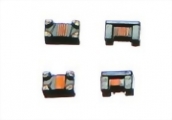A power inductor is an electric component that stores energy in its magnetic field when current passes through it. Its unique characteristic is that it resists changes in current flow, which makes it an essential component in electronic circuits. Power inductors come in different shapes and sizes, including toroidal, drum core, and rod core. These inductors are made from different materials, such as ferrite, ceramic, and nanocrystalline.

The traditional material used for power inductors is high perm ferrite. However, due to the ever-increasing demand for higher performance and efficiency, nanocrystalline has replaced high perm ferrite in common mode chokes. Common mode chokes are used to suppress electromagnetic interference (EMI) in electronic circuits. They are vital in any electronic system to ensure that signals are not affected by unwanted noise.
MH&W International Corporation offers a vast range of nanocrystalline NANOPERM toroidal cores for common mode chokes. The primary requirement for an EMC filter choke is high impedance, and nanocrystalline has proven to be a suitable material for this purpose. Nanocrystalline has a high permeability factor of up to 10 times that of ferrite, a higher saturation induction, and an extended working temperature of up to 180°C.
The advantages of nanocrystalline over ferrite in power inductors include better high-frequency response, better temperature stability, and higher magnetic permeability. The higher permeability of nanocrystalline enables the construction of smaller, lighter, and more efficient inductors that generate less heat.
In conclusion, power inductors are a crucial component in modern electronic systems that require high efficiency, high performance, and advanced power management. The development of nanocrystalline material has revolutionized the world of power inductors, making it possible to create smaller, lighter, more efficient, and more effective filters for power electronics. The use of nanocrystalline in common mode chokes ensures optimal performance and EMC compliance in any electronic system. Therefore, power inductors made from nanocrystalline material are sure to become the industry standard as electronics continue to advance.